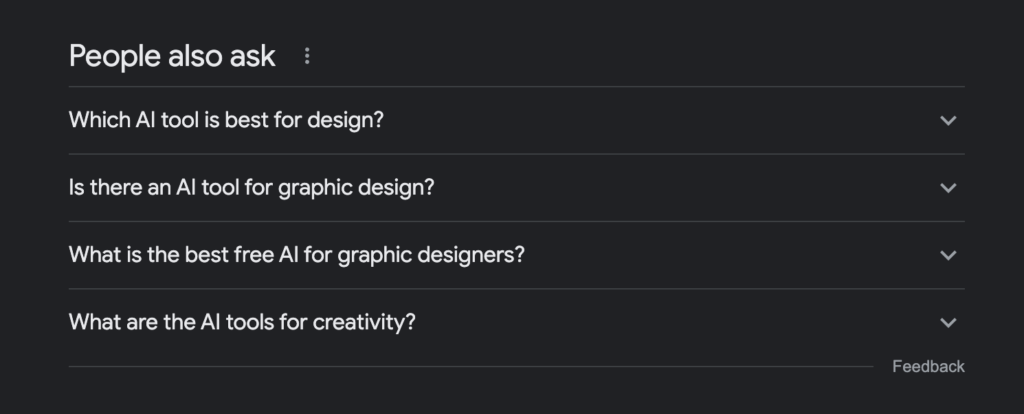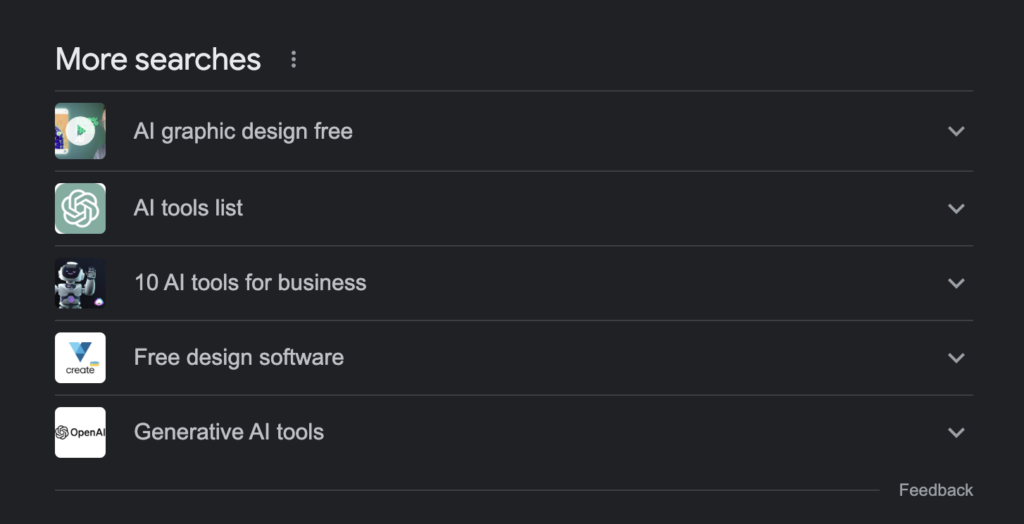Writing a blog post always seems so simple. You sit down, open up WordPress, and then you begin to write.
But sometimes nothing comes out.
Or even worse, sometimes you write the perfect blog post (in your opinion) and then find that when people visit the blog post they don’t care about it all.
What’s up with that?
That’s the question so many bloggers have to ask themselves.
How to write a blog post that not only attracts people to your blog but also keeps them there?
But why do bloggers get so excited about writing a blog only to find that nothing comes out? It’s one of the greatest mysteries of blogging. The ability to grab and keep the reader’s attention is really the defining quality of a good blog.
You see, simply writing a blog post doesn’t make it good. You need to understand WHY great blog posts are great.
And that’s what we are going to figure out in this post.
I assume you’re ready? Then it’s time to dive into the ultimate guide for how to write a great blog post.

Why People Read
Before you get started on learning how to write the world’s most amazing blog posts, it’s important that you understand why people read.
In particular, why do people read on the Internet?
Every single one of us starts with a story in our heads. This story pits them in the center of it.
They are the Hero of their story. Yes, you can be the Hero and your target audience can be the Hero as well.
This Hero is going on a journey and this journey is supposed to lead them to something great.
What?
Well, that’s up to the Hero.
It could be that they want a new job or they really want to stop fighting with their partner.
It doesn’t matter. We all have that story and that story has a journey.
So why do people read blog posts?
It’s because they need help on their journey. They’ve encountered some type of obstacle that is preventing them from moving further in their journey.
They are hoping that the blog post they are about to read will help them overcome that obstacle and then continue on their journey.
Some blog posts might even help them all the way through to the end of their journey.
This is important to keep in mind because there are so many blog posts out there that just don’t do anything.
They don’t entertain. They don’t educate.
They are just there.
They are a complete waste in the online world and they continue to pile up like garbage.
Please don’t contribute to the garbage. In fact, I should make you take a blood oath that you won’t contribute to the surge of poorly written and uninteresting blog posts that seem to inhabit all of the Internet.
Anyways, the Hero has a story and the blog post is supposed to help the story move along. This means that you should understand the Hero.

How to Write a Blog Post that People LOVE
You might not think that the Hero is a big deal, but trust me, the better you get to know them, the more comments, emails, shares, and everything else vanity metric you’ll get.
For many people, it’s really the difference between unlocking that writing voice they’ve been looking for and simply writing stuff that always seems to fall flat.
Here are the 11 steps to writing the perfect blog post:
- Choose a compelling topic
- Understand your reader
- Do your research
- Create an outline using the Skyscraper technique
- Write an intriguing intro
- Answer their search query
- Provide a more in-depth answer to their search query
- Bring it home with a strong conclusion
- Look for linking opportunities
- Find relevant images that stand out
- Create a curiosity-driven headline
1. Choose a Compelling Topic
In a perfect world, you’d be able to sit down and write whatever you wanted and get the kind of traffic that you dream about.
But we don’t live in that world.
For that reason, you need to write about the things that will compel your ideal reader to come to your blog. You need to figure out the things that they are searching for and are interested in.
How?
There are actually a number of different methods, but the easiest is the Google Alphabet Soup Method. Don’t worry, I’m not going to make you look that up. Here is a very quick video on how to do Alphabet research.
While the Alphabet Soup Method isn’t the only method to find new blog post ideas, it’s the easiest one to get started with so it’s the one that I always recommend.
Once you have an idea for the blog post that you’re going to write you need to understand the person that you want to read it.
2. Understand Your Reader
Everything that we do here at Pocket Business revolves around us truly understanding the reader whom we like to call the Hero.
If you want to get good at anything with your business (building it, creating offers, writing blog posts, etc.) then you need to understand your Hero better.
The more you understand them, the more likely you’ll connect with them on an emotional level and this is what keeps people around.
This is how you build such a strong connection with them that they begin to explore your site and even share it with their friends.
And that’s what business building is about. Making connections.
When your Hero can connect with you, then you have a shot at really making money with blogging.
But how do you understand the Hero? It’s simple. What you need to do is simply put yourself in the shoes of your Hero before you begin to write your blog post.

The Hero Needs Help
Whatever the topic is, just imagine why your Hero needs help with it. Understand their frustrations and anger (there won’t always be anger) with the topic.
For you, I need to understand why you feel that writing a great blog post is so hard. If I thought you believed it was easy then I would simply make this blog post say, “write a beginning, a middle, and then an end.“
But that isn’t going to help you, is it?
You’re here because you really want to know how to write great blog posts every single time.
There is no point in spending your hard-earned time writing something that nobody is going to appreciate.
The more you understand your Hero, the more your writing will reflect that. You’ll begin to write as if you are sitting right next to your Hero and they can understand you perfectly.
The writing will pull the Hero in and they will simply nod their heads at the end of each paragraph because they believe and love every single word that you’re saying.
The biggest problem that we find with bloggers who aren’t reaching their goals is that their blog posts just aren’t very good because they don’t draw the reader in.
So before you even write a single word imagine what the Hero is going through. Imagine what immediate problem they are having with your topic and then address it.
Most importantly, keep in mind their feelings with regard to the topic. Are they frustrated? Excited? Sad? Nervous?
This will keep them plugged into your post and continue to give it attention.
Now that you’re wearing your Hero’s clothes (that was a joke, please don’t do that) you can start to think of the blog post that you want to write.
But don’t just sit down and start writing. You need to do a bit of research beforehand.

3. You Need to Do Your Research
Look, since we are best friends I have to confess something to you. I’m not a fan of research.
I’d rather just write, but if you’re going to keep the attention of your Hero, then you need to know what you’re talking about and more importantly what things they need to know.
And the best way to ensure you know what you’re talking about is by doing a bit of research. Even if you feel that you’re an expert in the topic.
So what exactly are you researching?
What things your Hero needs to know and what they are specifically looking for.
You might think that these are the same things and sometimes they are, but sometimes they aren’t.
This blog post right here is a perfect example. You might’ve come here looking for the exact structure for writing a great blog post and don’t worry, I’ll show you that.
But you didn’t know that you should understand your Hero but I feel it’s an important part of writing a great blog post so I shared that with you.
That makes sense, right?
But how exactly do you a research?
You could do it the old-fashioned way and open up a book and start reading or you could start by using the Skyscraping Technique.
What’s that?
Glad you asked.

The Skyscraping Technique
I learned about Skyscraping from Brian Dean.
In a nutshell, what you do is see what posts are ranking for the keywords that you rank for and then you steal all of their content.
I’m just joking, please don’t do that.
With the Skyscraping Technique, what you’re doing is looking at the things the posts on a keyword are talking about and you’re writing down their main talking points.
Once you have a collection of these talking points you know some of the things that your post should cover.
But you aren’t done yet because there could still be more stuff.
Next, you go back to Google and search for the keywords again, but this time you’re scanning the results to find two sections:
- People also ask
- Searches related to…


These are things that Google believes people are looking for in relation to your topic.
With all of this information, you should have a fairly good grasp of what you should talk about in your blog post.
Notice, that you didn’t steal any content. You simply saw what things people talked about and now you’re making sure at the very least you cover those topics as well.
Throw in Google and you have a pretty solid basis for a blog post.
Throw in your own experience with the topic (if you have any) and now you really have something amazing.
If you want to learn how to write blog posts for SEO then this phase is the most important.
Next, you can jump into the actual writing of the blog post.

4. Create an Outline
I used to hate creating outlines because I’m the type of person who just likes to sit down and write. And most of the time I still do that when I know the topic pretty well.
However, if I don’t know a topic well and I want to write a great SEO post from the beginning, then it’s always best to create an outline.
With everything that you did in the previous section, you should have a list of topics and ideas that you want to cover within the post. From there you simply make an outline that flows well.
Once you’ve completed your outline you can decide what type of blog post you want to write. What do I mean?
The 4 main types of blog posts are:
- List Post
- How-To/Tutorial
- Product Review
- Case Study
Which post type fits best with the information that you’re trying to present?
The First Version
There is an important rule when it comes to blog posts.
They are never done.
Ever.
I tell Odd Noodle students this all of the time. Nothing is written in stone.
And yet you would think that once someone publishes a blog post the edit button is removed from them.
That’s not the case.
So what I like to do is gather my thoughts on what I want to write about and then start writing.
No editing.
Just write.
I do this because you have two brains when it comes to writing blog posts: the writer and the editor.
If you try to use both at the same time then it’s going to take you forever to finish the first version of your blog post.
However, if you let them take turns, then the whole experience will go faster.
For example, when I write a blog post, I sit down and just write and write and write.
It helps me do around 2,000 words in 30 minutes if I’m really feeling spunky. It also means that my mind gets to keep momentum and really flush out a topic.
If I continued to stop and edit as I went along I might lose my train of thought.
And you never want that to happen.
So sit down and just write. Don’t stop until you run out of things to say.
Once you’re done, then you can go back and start making adjustments.
So HOW do you write your post? You start at the beginning.

5. Write an Intriguing Intro
This is your opportunity to hook the reader in. If you can’t grab their attention in the Intro then you’re pretty much lost the rest of the way.
The intro is going to introduce them to the post and what you’re going to help them with. You don’t want to keep it a secret.
Let them know right away what value they’re going to get.
I like to throw in humor and maybe a bit of a story if I have a good one to tell. It doesn’t matter as long as it convinces the reader to continue reading. However, don’t make the intro so long that the reader forgets why they are even there.
Brevity is always a great device when it comes to writing.

6. Answer Their Search Query
Next, you want to make sure that you directly answer their search query. You’ll notice that towards the beginning of this post, I listed out all of the steps for writing a great blog post.
This is directly answering the main search query that I hope people use to find the post.
If you’re curious about how people get into Featured Snippets, then this is how. You answer the search query early in your post.
7. Provide an In-Depth Answer to Their Search Query
You might’ve panicked and thought that if you answer the search query early then there is no reason for the person to read any further, but we know that isn’t the case because you did research and have a nice outline of everything else that they should know.
Some people will be satisfied with your short answer at the beginning while others will have even more questions and if you can convince them to continue reading your post then you’ll be happy to answer all for them.
Again, this post is the perfect example. You got the answer to how to write a blog post and now you’re getting a more in-depth explanation.
8. Bring It Home With a Strong Conclusion
Whenever we do a blog audit for someone, this is where we find that their posts fall flat.
Some people just outright skip the conclusion. They don’t write one because…well, I don’t know.
They just don’t.
Others quickly write one and call it a day.
However, the conclusion is important because it allows you to drive the point home, and for those people who like to scan it gives you an opportunity of what they missed which will entice them to go back and actually read.
Within your conclusion, you should do a quick recap of what you talked about in the post and the main takeaway. From there you need to provide a call to action on what you would like the reader to do next.
For this post, you’ll see that I would love for you to sign up for our Blogging Bootcamp.
The conclusion is a great opportunity to help you reach your goals with your blog so don’t let it go to waste.

Editing Your Post
When you’re done with the first version, go back and read it. Try not to do any editing unless it’s fixing misspellings.
What you want to do is get a feel for the whole flow of the post.
If you begin to edit paragraph-by-paragraph you can very easily break up the flow of your post to the point where it feels like 13 posts in 1.
Understand the entire flow that you’re trying to create with the post and see if it’s there.
If it isn’t then you know what adjustments you need to make as you go through each paragraph.
Sidenote: When it comes to catching silly mistakes I like to use the Grammarly plugin. It isn’t perfect, but it catches those obvious misspellings and sometimes grammatical errors that my eyes are too lazy to notice.
As you edit each paragraph it’s important to understand the job of that paragraph.
What is it?
To get the Hero to read the next paragraph.
That’s it.
Each paragraph has to be written in a way that makes the Hero want to read the next one. And then the next and next and next, until they get to the end of the post.
If you find that people are leaving your post quickly or not spending much time on the page it’s because your paragraphs aren’t getting the person to want to read the next one.
This can be hard to do if you don’t know what you’re talking about and don’t really have a voice for writing.
Oh, we haven’t talked about that yet so let’s do that.

Your Voice
Have you ever read a blog post that was extremely boring? I mean, it felt like it had no personality.
I’m sure you have as they are everywhere.
Why is that?
It’s because the writer hasn’t found their voice or they are proactively pushing it back.
But what is your voice? It’s you.
Think about when you get excited about a topic and talk it out with your friends.
That’s your voice.
That’s the thing that is engaging. That’s the thing that keeps people reading your stuff.
But how do you bring it out?
Well, first you need to get rid of the representative. Who is that?
Dropping the Representative
The Representative is the person that you send in your place. For some reason or another, you might believe that people don’t actually want to hear from you.
Instead, they’d love to hear from a more professional you or some shit and so you send out a representative.
This “thing” kind of sounds like you but also really doesn’t. They think people want to know the super uptight, unfun, and robotic you.
But people don’t want that.
They want you.
They want you with your quirks. They want you with your passions.
Why?
Because that’s what they’re bringing to the table in their own story.
Nobody wants to bring themselves to a meeting only to find that everyone else has sent their representative.
It’s like showing up at a costume party without a costume.
So get rid of the representative. Remember, if the person reading your post doesn’t like who you are then they aren’t your Hero.
Your Hero will absolutely love who you are so write for them.
The more you write and go over your own content, the better you will get, but you can’t get better if you don’t write.
One little trick I like to use is trying to make myself smile or laugh in the first couple of paragraphs.
If I can make myself laugh then chances are my personality is in the post.

The Purpose
Now that you’ve written the first version of your post and you’re starting to see if your voice is in there, you need to consider what the actual purpose of the post is.
What I mean is that each post should serve a specific purpose for your business. Usually, this occurs in the form of calls to action.
- Is it to get people to buy something?
- Is it to get them to sign up for your mailing list?
- Is it to get them to read another post?
Once you understand the purpose of your post you can do a better job of guiding your Hero to that specific action.
But shouldn’t you figure this out before you start writing? You very well could, but I often find that it takes away from what the reader is trying to get out of the post.
Usually, you can guide them to whatever action you want towards the end of your post as you tie everything together.
But if you want to keep their attention then you should make sure that you’re providing them with exactly what they want.
Now it’s time for the second version of the post.
This could be the last version of the post until you update it a couple of months down the road or it might be one of an infinite number of versions.
The purpose of the second version is to tidy things up.
Since you’ve read the post you’ll have a feel for how it flows and if it is entertaining enough to keep someone engaged.
There are some definite items that you want to check off of the list as you work on your second version.
9. Look for Linking Opportunities
Eventually, you want people to visit the post from Google. That means you need to lock in some SEO so that you can appear towards the top of the search results.
You’re doing all of this writing so that you actually get people to read your stuff, right?
If you don’t know what SEO is it is Search Engine Optimization. It’s the things that you do to a post to give you the best shot of ranking on Google.
It can be a very deep subject but that doesn’t mean you need to know all of it to succeed.
The reason why we didn’t touch SEO in the first version of the post is that the first version is for the reader.
That’s when you get all the stuff in your head out onto the screen. If you’re too busy thinking about SEO then what can happen is that your posts begin to sound like they were written by a robot.
SEO doesn’t work well if people aren’t staying on the page and reading your content.
One of the major factors in SEO rankings is your ability to keep people on your site.
If you write for them first then you have a better chance of making that happen.
Keywords
SEO revolves around keywords. Those are the things that people type into Google’s search box.
You want to rank for keywords so as you go through your post you need to keep in mind where you’re going to put keywords.
Now, before we go any further let me tell you something. Do not just randomly place keywords anywhere in your post.
Remember, you’re writing for your Hero so simply place keywords in places where it makes sense for the flow of the document.
Where should you be looking to put keywords?
- Post title
- Headings
- Alt text in images
- Within the content
You really don’t need to push yourself further than that. I rarely think of SEO when I tackle my posts. I might find a keyword that I want to try and rank for but then I just sit down and write the post.
I’ll go back and see if there is a good opportunity to put in a keyword but if I’m being honest I don’t sweat it that much.
Meta Descriptions
While meta descriptions aren’t explicitly shown by search engines they are still a great place to provide a summary of your post as social media networks still use them.
And that is your quick SEO lesson of the day.
Linking Opportunities
When we develop content strategies for people the most important thing that we like to plan out is how can the content link to each other. It’s highly overlooked when it comes to SEO but it can be the difference between you being in the top spot and you sitting at #11.
You’ll want to find opportunities within your post to link to other pieces of content on your site. Why?
Because you want to provide a map for both Google and your readers that will allow them to move easily through similar topics.
If you’re just blindly writing blog posts without any idea of Topic Clusters, then this can be hard to do. However, if you follow the Hub & Spoke model things become a whole lot easier.
Scannability
The next thing I look for in a post is how easy it is to scan.
You have to keep in mind that most people reading your blog posts are going to be on their phones and probably doing something else.
For that reason, you want to make sure your post is easy to read and has enough pattern interrupts to get people to stop scrolling.
So if you find that your post has a ton of text in successive order, you might want to consider breaking things up.
How?
- Headings
- Bullet points
- Images
- Bold and italicized text
That way when someone is scanning their eyes will be drawn to the pattern interrupts that you’ve inserted.
As usual, make sure that it makes sense for the post.

10. Find Relevant Images That Stand Out
The last thing any reader wants to encounter is a giant wall of text. It can be intimidating.
However, images make people stop. They make them see what is being said.
It’s also why image captions are some of the most-read text in a blog post.
There are a ton of places where you can find free stock images. We use Adobe Stock and even though it’s pricey, for us the images that we’re able to get are well worth it.
A Better Alternative to Unique Images
While stock photo sites are still great, if you want to get unique images (like the one you see in this blog post) then you’d be wise to invest in Midjourney.
It’s a generative AI app that allows you to create any image that you can imagine. It’s amazing to create branded images around your blog that are unique to you.
If you’d like to learn more then check out our post, Midjourney for Blogging.

11. Create a Curiosity-Driven Post Title
Some people like to write the post title first while I like to save it for last.
Why?
Because then I have a better feel for the blog post and what things within it would draw the reader in. For this post, it was the 11 steps so I’ll use that in the blog post title.
You always want your blog post titles to invoke curiosity in the reader so that they click on the link and begin to read.
Some people will spend hours crafting the perfect post title and while that is a bit extreme, they should definitely have time spent on them since they are the first encounter someone has with a blog post.
Here is how we craft irresistible blog post titles.
What Is a Good Blog Post Length?
Another great question to ask is whether or not word count matters when it comes to writing a great blog post. And the answer is yes and no.
No, it doesn’t matter because if you can get all of the information a reader would need into 800 words then 800 words is enough. But, usually, 800 words is not nearly enough to get all of the information out.
An 800-word post on how to write a blog might seem ideal to you, but the reality is that there is so much to talk about with regard to writing blog posts that you’re going to end up with over 3,000 words.
Or maybe that’s just me.
Hitting Publish
Unfortunately, you’ll never know if your blog post is going to be a winner if you don’t hit publish. Once your blog post is out the door it can get into the hands of your audience and they’ll dictate whether or not something is there.
It’s probably one of the hardest things for new bloggers to accept.
You can’t know what the perfect blog post is until somebody else sees it.

How to Write a Good Blog Post
Writing great blog posts takes practice. Too many people sit down and think that just because the only thing they have to do is press some keys, that means a wonderful blog post will just happen.
I’ve written a lot of great blog posts in my life and probably a ton of flops as well.
However, each one has made me a better writer so don’t ever think that great blog post writing happens with thought.
It happens with action. Learning how to write faster will also aid in your ability to really churn out quality blog posts because practice makes for better blog posts.
The benefits of learning how to write effective blog posts can not be overstated. They will help you build up your email list, develop trust with your audience, and more importantly make you more money.
You can’t make a full-time income blogging without publishing blog posts.
Writing blog posts IS content marketing.
Because it’s marketing you might be wondering if there are any benefits to blogging daily and that really comes down to the quality of the posts. Don’t write daily just because you think it’s going to get you more traffic.
Write daily because you’re building a library and you want it to be the most helpful thing possible for your reader.
If you do decide to write daily then you’ll need a blog writing checklist.
Now that you know how to write a great blog post, it’s time to learn about how you can use blogging to make money!

